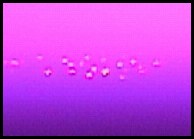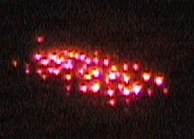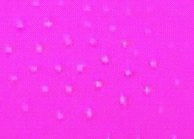Accept
Details & settings
This website uses cookies for cookie consent and statistics.
Moritz Plötzing, Binia Neuer, Benedikt Lorbach
In 1994, scientists at the Max Planck Institute for Extraterrestrial Physics (MPE) in Garching were the first to create plasma crystals. Plasma crystals are crystalline arrangements of microparticles that can form in plasmas under certain conditions. Their formation is linked to charging of the microparticles in the plasma. The importance of plasma crystals is illustrated by the fact that one of the first experiments on the international space station (ISS) was devoted to them. Plasma crystals are not only an ideal system for fundamental research, but they also offer opportunities for many applications in nanotechnology and electronics, such as solar cells with higher efficiency. These crystals fascinated us and we were determined to create our own plasma crystals. However, our school cannot compete with the equipment available at the MPE in Garching or the ISS, making the creation of plasma crystals at school a challenging proposition. We had experience with hot plasmas, which we ignited and studied in a microwave oven in 2001 during a previous project, but hot plasmas are not suitable for plasma crystals. Eventually, we succeeded in creating a cold plasma, which is essential for the crystal formation, using a Tesla coil and a homemade plasma chamber. It still took a lot of optimization to get a homogeneous plasma in an argon atmosphere at low pressure, rather than plasma arcs or field fluctuations. The next challenge was the insertion of microparticles, which we solved initially with a loudspeaker and later with a homemade dust dropper.
We learned a lot about plasma physics and plasma crystals during a visit to Christian-Albrechts-University in Kiel, where we also got a fine dust sample of microspheres. During our experiments in Kiel we found that our homemade plasma chamber was suitable for the creation of plasma crystals, however, our Tesla coil was not powerful enough to let the microparticles float above the bottom electrode. RWTH Aachen University kindly provided us with a 13.56 MHz transmitter. After adjusting the impedance of our plasma chamber to this transmitter, we were able to ignite a suitable plasma. Only a few days later we created our first plasma crystal. By now we have tried a number of cheap dusts. We are particularly proud of our first organic plasma crystal, which consists of Lycopodium powder. We have filmed our dust particles from above and the videos clearly show the hexagonal lattice, providing the first proof that we have created plasma crystals using simple means.

Our first plasma crystal consisting of microspheres |

Plasma crystal consisting of Lycopodium powder |

Plasma crystal consisting of Xerox toner |